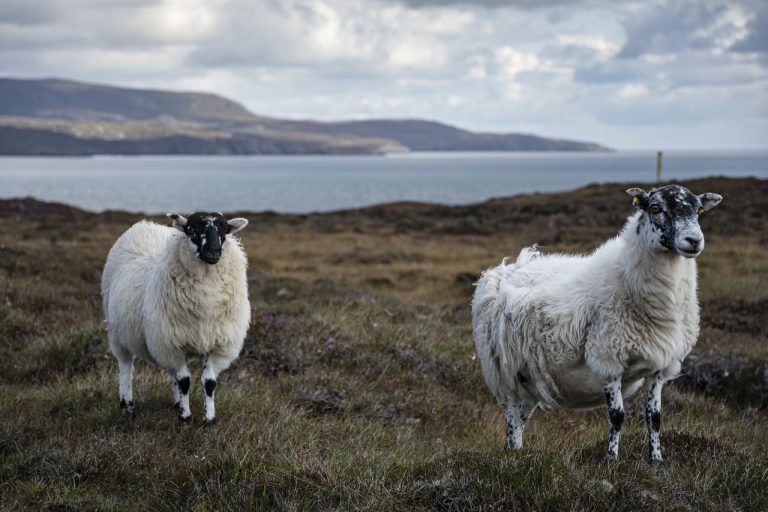Uist

stunning landscapes, rich wildlife and ancient history
Uist consists of a string of connected islands in Scotland’s Outer Hebrides, primarily North Uist, Benbecula, and South Uist. These islands offer a remarkable blend of stunning landscapes, rich wildlife, and ancient history, all bound together by Gaelic culture and language.
South Uist is known for its western coastline of spectacular white sandy beaches and machair – a rare type of coastal grassland that bursts with wildflowers in summer. The eastern side contrasts dramatically with rocky hills and freshwater lochs. Askernish Golf Course, designed by Old Tom Morris and restored to its original 1891 layout, is considered one of the most natural golf courses in the world.
Benbecula, lying between North and South Uist, is relatively flat and known locally as ‘the stepping stone’. Its name comes from the Gaelic ‘Beinn na Faoghla’ meaning ‘mountain of the ford’. The island’s airport provides vital transport links, and its main settlement, Balivanich, offers essential services.
North Uist is characterised by its countless lochs (it’s sometimes called ‘the island of lochs’) and is renowned for its wildlife, particularly its birdlife. The RSPB reserve at Balranald offers chances to see rare species like corncrakes and hen harriers. The island is also home to important archaeological sites, including the Barpa Langass chambered cairn and the standing stones at Pobull Fhinn.
Traditional crofting (small-scale farming) continues across the Uists, contributing to the islands’ distinctive landscape pattern. Gaelic remains widely spoken, and traditional music flourishes, with many residents skilled in playing the bagpipes or accordion.
The islands face the full force of Atlantic weather, which has shaped both the landscape and the way of life. However, the Gulf Stream ensures relatively mild temperatures year-round. The islands are connected by causeways, making it easy to explore the entire chain by car.
Local specialities include seafood, particularly shellfish, and traditional dishes often feature locally sourced ingredients. The islands also maintain strong traditions in weaving, with many crofters still producing Harris Tweed on traditional looms.
Archaeological evidence shows these islands have been inhabited for thousands of years, with remains from the Neolithic period through to medieval times. Historic sites like the ruins of Ormacleit Castle and Flora MacDonald’s birthplace connect visitors to the island’s dramatic past.
Uist blogs ...
Would you like to share your Scotland stories?
Why not check out my travel resources or get in touch with your experiences


